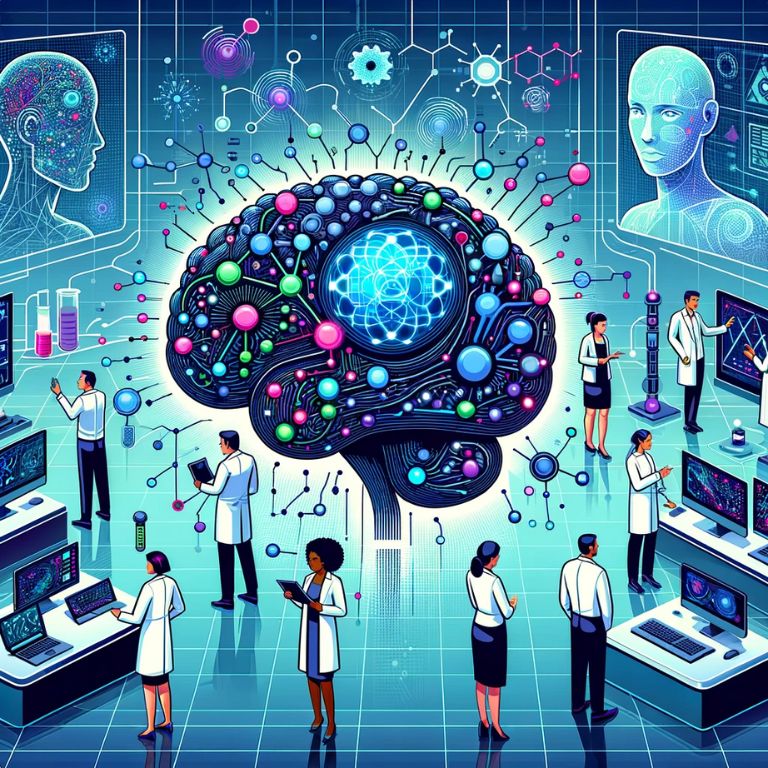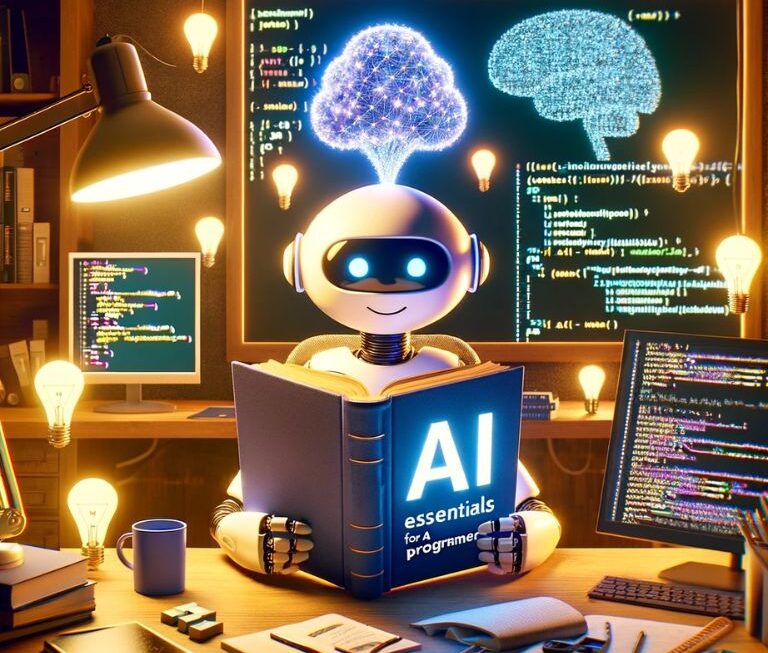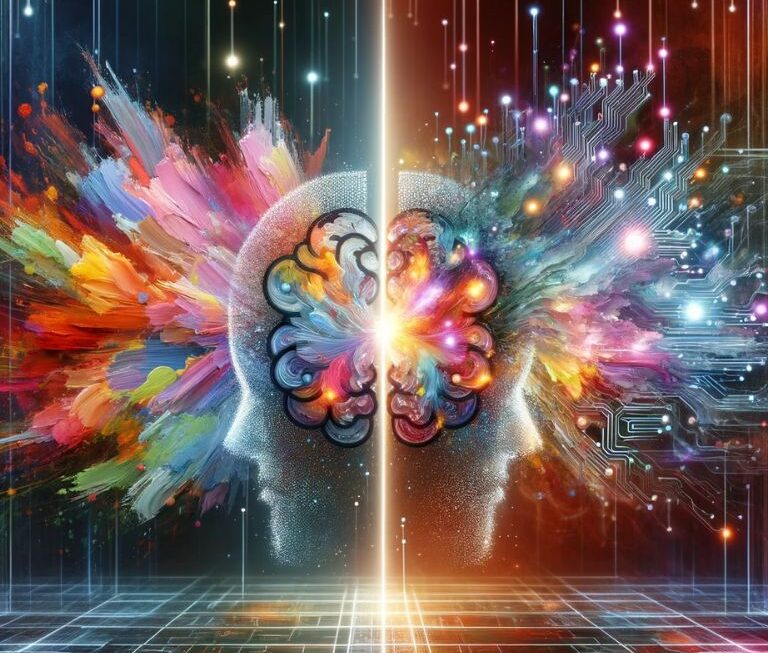In the ever-evolving landscape of technology, Generative Artificial Intelligence (AI) stands out as a groundbreaking innovation, reshaping how we interact with and perceive the digital world. At its core, generative AI refers to algorithms and systems capable of creating content, be it text, images, music, or even code, through learning from vast sets of data. Unlike traditional AI, which primarily focuses on interpreting and analyzing data, generative AI takes a step further by producing new, original content.
A Brief History of Generative AI
The roots of generative AI can be traced back to the mid-20th century with the advent of early neural networks. However, it wasn’t until the last decade that significant strides were made, thanks to advancements in computational power and machine learning techniques. Key milestones include the development of Generative Adversarial Networks (GANs) in 2014, which revolutionized the field by enabling the creation of highly realistic images and videos.
Current Applications and Significance
Today, generative AI finds applications across a myriad of fields:
- Creative Arts: From generating novel artwork to composing music, AI is pushing the boundaries of creativity.
- Content Generation: In the realm of writing, AI tools are assisting in drafting articles, creating marketing content, and even scripting narratives.
- Healthcare: Generative models are being used to create synthetic medical data and drug molecules, aiding research and development.
- Technology: AI is contributing to software development through code generation and optimization.
The significance of generative AI lies in its potential to democratize creativity and innovation. By automating aspects of content creation, it allows individuals and businesses to focus on strategic and creative tasks, fundamentally changing the workflow in various industries.
The Dual Aspect of Generative AI
While the capabilities of generative AI are impressive, they come with a dual aspect. On one hand, there’s the immense potential for innovation and positive change. On the other, there are concerns about authenticity, ethical implications, and the impact on job markets. Understanding and navigating these aspects is crucial for leveraging generative AI responsibly and effectively.
Unraveling the Limitations of Generative AI
While generative AI has shown remarkable capabilities, it’s crucial to acknowledge and understand its limitations. This understanding not only grounds our expectations but also guides us in responsibly harnessing this technology. Here, we delve into the primary challenges and limitations confronting generative AI.
Technical Constraints and Current Challenges
- Data Dependence: Generative AI models are heavily reliant on the data they are trained on. The quality, diversity, and volume of this data directly impact the AI’s output. Inadequate or biased data sets can lead to skewed or inaccurate results.
- Computational Costs: Training sophisticated generative AI models requires significant computational resources, making it a costly affair. This limits accessibility for smaller organizations and independent researchers.
- Lack of Understanding and Control: Despite their effectiveness, the internal workings of these AI models often remain a ‘black box’. This lack of transparency can be a barrier in situations where understanding the decision-making process is crucial.
Ethical and Societal Implications
Generative AI raises several ethical concerns:
- Authenticity and Misinformation: The ability of AI to generate realistic content raises concerns about the creation of fake or misleading information, posing a threat to the authenticity of digital content.
- Job Displacement: There’s an ongoing debate about AI potentially replacing human roles, particularly in creative fields, leading to concerns about job security and the future of work.
- Bias and Discrimination: AI systems can inadvertently perpetuate and amplify biases present in their training data, leading to discriminatory outcomes.
| Factor | Description |
| Data Quality | The accuracy, completeness, and reliability of data determine the efficacy of AI outputs. Poor data quality leads to unreliable results. |
| Data Availability | Access to large, diverse datasets is essential for training effective generative AI models. Limited data availability restricts the potential of these systems. |
| Challenge | Description | Impact |
| Data Dependence | Reliance on large, diverse datasets | Limits scope and accuracy |
| Computational Costs | High resource requirement for training | Restricts accessibility |
| Transparency | ‘Black box’ nature of AI algorithms | Hinders understanding and trust |
| Ethical Concerns | Potential for misuse and bias | Raises moral and societal questions |
Understanding these limitations is fundamental to the responsible development and application of generative AI. It prompts the need for continuous research, ethical considerations, and the development of standards and guidelines to ensure that the growth of generative AI aligns with societal values and needs.
The Promise of Generative AI: Opportunities and Innovations

Despite its limitations, generative AI opens a realm of immense possibilities and is already making significant contributions across various fields. This section highlights the promising applications and the innovative potential of generative AI.
Advances in Various Fields
- Healthcare: Generative AI is revolutionizing the medical field by aiding in drug discovery, creating personalized medicine, and generating synthetic data for research while maintaining patient privacy.
- Art and Creativity: AI is not just a tool for efficiency but also for creativity. It’s being used to create novel artworks, music compositions, and even to write poetry, expanding the boundaries of human creativity.
- Technology and Software Development: In technology, AI is used for automating coding, improving software testing, and even optimizing complex systems, accelerating the pace of innovation.
- Business and Marketing: From generating unique marketing content to providing customer service through chatbots, AI is transforming business operations, making them more efficient and customer-centric.
The Role of Generative AI in Problem-Solving and Creativity
Generative AI’s ability to analyze vast datasets and generate creative solutions is invaluable in problem-solving. It can identify patterns and solutions that might elude human analysis, leading to innovative approaches in various fields.
Innovative Applications of Generative AI
- Healthcare
- Application: Drug discovery, synthetic data
- Impact: Accelerates research, maintains privacy
- Arts
- Application: Art creation, music composition
- Impact: Expands creative possibilities
- Technology
- Application: Code automation, system optimization
- Impact: Increases efficiency, drives innovation
- Business
- Application: Marketing content, customer service
- Impact: Enhances engagement, improves operations
These applications demonstrate that generative AI transcends mere task automation, playing a vital role in enhancing human capabilities and nurturing creativity across various sectors.
Bridging Gaps and Opening New Frontiers
Generative AI is particularly adept at bridging gaps in data and knowledge, offering new ways to approach complex problems. By generating simulations, models, and predictions, it is enabling professionals in various fields to explore scenarios and solutions that were previously unattainable.
Future Possibilities
Looking ahead, the possibilities of generative AI are boundless. As the technology matures and becomes more integrated into our daily lives and work, it will continue to unlock new potentials and drive innovations. The future might see AI not just as a tool but as a collaborator in creative processes and problem-solving.
Navigating Ethical and Security Concerns in Generative AI
As generative AI continues to evolve and integrate into various aspects of society, it brings with it a host of ethical and security concerns that must be navigated with care and responsibility. This section delves into these challenges and explores how they can be addressed.
Addressing Privacy and Security Issues
- Data Privacy: Generative AI often requires large datasets, which can include sensitive personal information. Ensuring the privacy and security of this data is paramount to prevent misuse and breaches.
- Security Risks: AI systems can be vulnerable to cyber-attacks, including data poisoning and model theft, which can compromise both the AI system and the data it uses.
- Misuse Prevention: There is a risk of generative AI being used to create deceptive content (like deepfakes). Developing and enforcing ethical guidelines is crucial to prevent such misuse.
Ethical Considerations in AI-Generated Content
- Transparency: Ensuring that AI-generated content is identifiable is important to maintain trust and authenticity in digital media.
- Bias Mitigation: AI can perpetuate biases present in its training data. Actively working to identify and mitigate these biases is essential for fair and equitable outcomes.
- Accountability: Establishing clear lines of accountability for AI-generated content and decisions is necessary to maintain ethical standards.
Ethical and Security Challenges of Generative AI

- Data Privacy
- Challenge: Protecting sensitive information
- Mitigation Strategies: Implementing robust data protection and privacy policies
- Security Risks
- Challenge: Vulnerability to attacks
- Mitigation Strategies: Enhancing cybersecurity measures, regular audits
- Misuse of AI
- Challenge: Creation of deceptive content
- Mitigation Strategies: Establishing ethical guidelines, transparency in AI use
- AI Bias
- Challenge: Perpetuating existing biases
- Mitigation Strategies: Bias detection and correction mechanisms
- Accountability
- Challenge: Responsibility for AI actions
- Mitigation Strategies: Clear legal and ethical frameworks
This list highlights key challenges in the realm of generative AI and outlines strategies to mitigate these issues, ensuring a responsible and ethical approach to AI development and application.
Future Directions for Ethical AI
Looking forward, the development of ethical AI will involve a multi-stakeholder approach. This includes policymakers, technologists, ethicists, and the public working together to create guidelines and standards that ensure the ethical use of AI. Additionally, there will be an increasing need for AI literacy and education so that users understand both the capabilities and the limitations of AI.
The Future Landscape of Generative AI
As we venture further into the 21st century, the trajectory of generative AI points towards a landscape replete with innovation and transformation. This section forecasts the potential advancements in generative AI and contemplates its evolving role in human life and work.
Predictions for Generative AI Advancements
- Enhanced Realism and Accuracy: Future generative AI models are expected to produce even more realistic and accurate outputs, blurring the lines between AI-generated and human-created content.
- Increased Efficiency and Accessibility: Advancements in computational efficiency and algorithm design are likely to make generative AI more accessible, reducing the resource barrier for smaller entities.
- Improved Ethical and Bias Mitigation Measures: As awareness of ethical concerns grows, future developments in AI will likely include more robust mechanisms to detect and correct biases, ensuring fairer outcomes.
The Evolving Role of AI in Human Life and Work
- Collaborative Creativity: AI is poised to become a collaborative partner in creative endeavors, offering new tools and perspectives to artists, writers, and designers.
- Augmenting Human Capabilities: In the workplace, AI will likely serve as an augmenting tool, enhancing human productivity and decision-making rather than replacing human roles.
- Personalization in Everyday Life: From personalized healthcare to customized learning experiences, AI will play a significant role in tailoring services and products to individual needs and preferences.
Future Prospects of Generative AI
In various domains, the application of AI is bringing substantial benefits to human endeavors. In healthcare, it plays a crucial role in diagnostic assistance and data analysis, significantly improving the accuracy and efficiency of patient care. Moving to the realm of creative arts, AI facilitates artistic creation and design innovation, leading to expanded creative possibilities and the emergence of new art forms. In the business sector, the capabilities of AI in market analysis and trend prediction are enhancing strategic planning and decision-making processes. These examples underscore the profound impact that AI applications have across different fields, highlighting the harmonious synergy between technological advancements in AI and human expertise.
Human-AI Interaction and Synergy
The evolution of generative AI is not just a technological revolution; it’s also reshaping the dynamics of human-AI interaction. This section explores how this interaction is unfolding and the ways in which AI is augmenting human capabilities across various domains.
Exploring the Evolving Dynamics of Human-AI Interaction
- Collaborative Work Environments: In many sectors, AI is transitioning from a tool to a teammate, collaborating with humans to achieve more efficient and creative outcomes.
- Enhanced Decision Making: AI’s ability to process and analyze large datasets is complementing human decision-making, particularly in complex fields like healthcare and finance.
- Education and Training: AI is playing a pivotal role in personalized education, adapting learning materials to individual students’ needs and pace, thereby enhancing the learning experience.
Examples of AI Augmenting Human Capabilities
- Healthcare: Doctors are using AI for diagnostic assistance, analyzing medical images with greater accuracy and speed than is possible for humans alone.
- Creative Industries: Artists and designers are collaborating with AI to explore new forms of expression, where AI-generated suggestions serve as a springboard for human creativity.
- Business Analytics: In business, AI tools are providing insights into market trends and consumer behavior, enabling more informed strategic decisions.
Synergy Between Human Intelligence and AI
- Healthcare
- AI Application: Diagnostic assistance, data analysis
- Human Benefit: Improved accuracy and efficiency in patient care
- Creative Arts
- AI Application: Artistic creation, design innovation
- Human Benefit: Expanded creative possibilities, new art forms
- Business
- AI Application: Market analysis, trend prediction
- Human Benefit: Enhanced strategic planning, better decision-making
This list illustrates the various domains where AI applications are significantly benefiting human endeavors, showcasing the synergy between AI advancements and human expertise.
The Future of Human-AI Collaboration
The future promises a scenario where human and AI collaboration becomes more seamless and intuitive. As AI systems become more sophisticated, they will not only augment human abilities but also learn from human inputs, leading to a symbiotic relationship that could unlock unprecedented levels of innovation and productivity.
A Balanced View of Generative AI
As we conclude our exploration of generative AI, it’s evident that this technology offers a mix of remarkable possibilities and significant challenges. On one hand, generative AI is a powerhouse of innovation, poised to revolutionize industries from healthcare to the arts, driving creativity and efficiency to new heights. On the other, it faces hurdles like technical constraints, ethical dilemmas, and societal impacts that necessitate careful navigation. The key lies in leveraging AI’s potential while conscientiously addressing its limitations, ensuring that its integration into our lives enhances rather than diminishes human capabilities.
Looking ahead, the journey of AI is not solely about technological breakthroughs but also about cultivating an ecosystem where AI and humanity coexist synergistically. This future landscape calls for balanced strategies encompassing ethical guidelines, equitable access, and widespread AI literacy. As AI continues to intertwine with the fabric of our society, the goal is to forge a path that harnesses the full potential of generative AI, shaping a world where technology acts as a catalyst for human progress and well-being.




